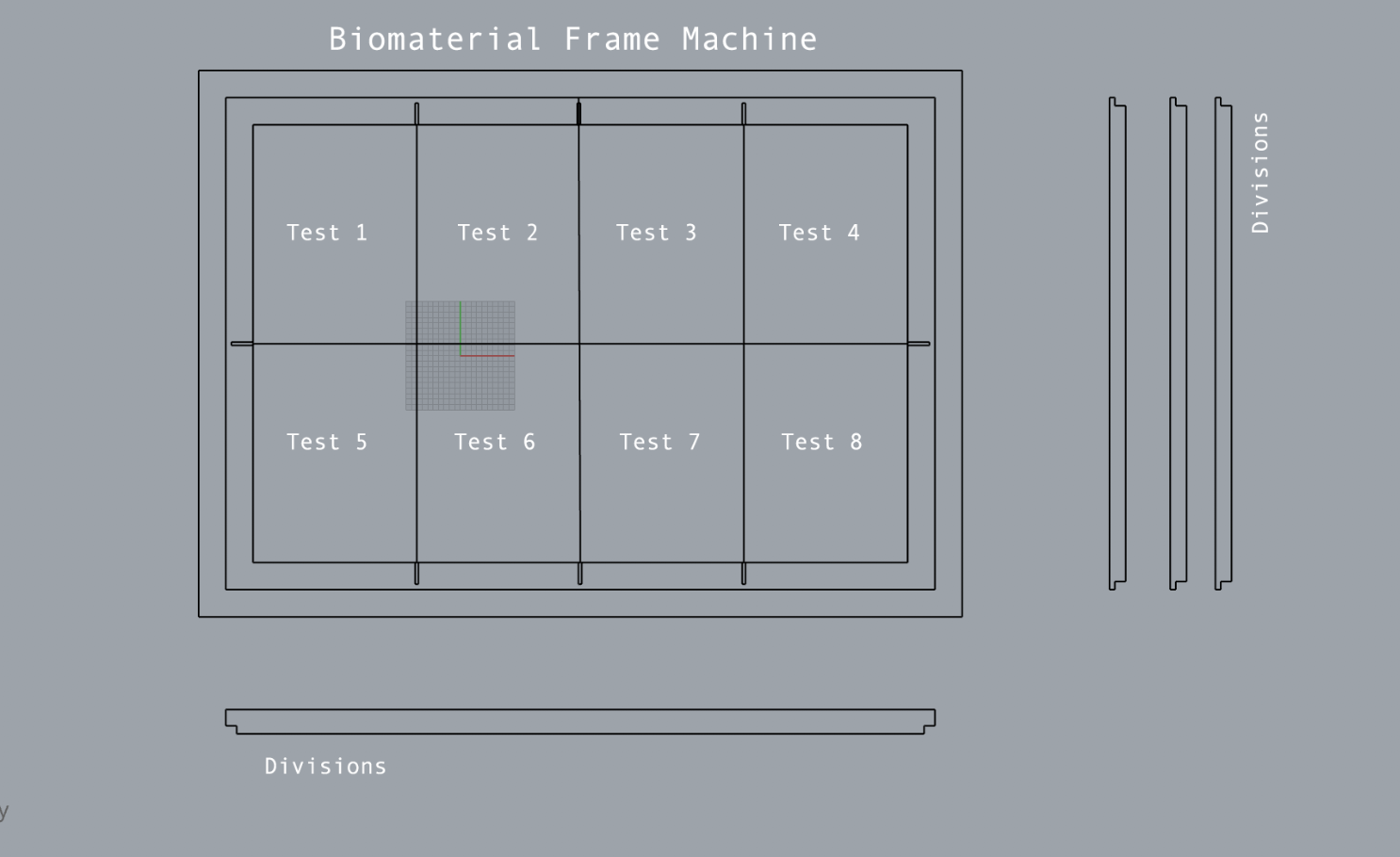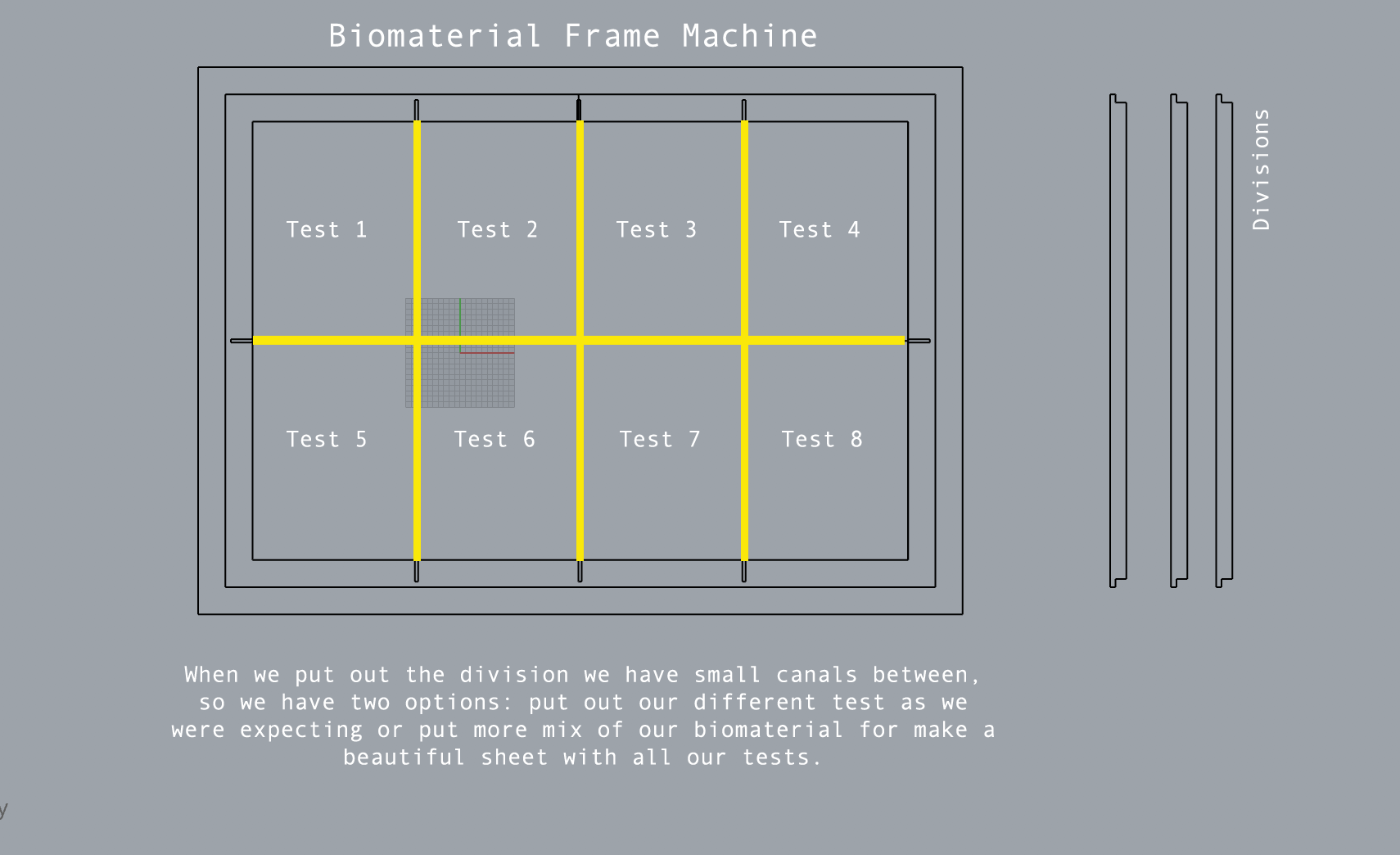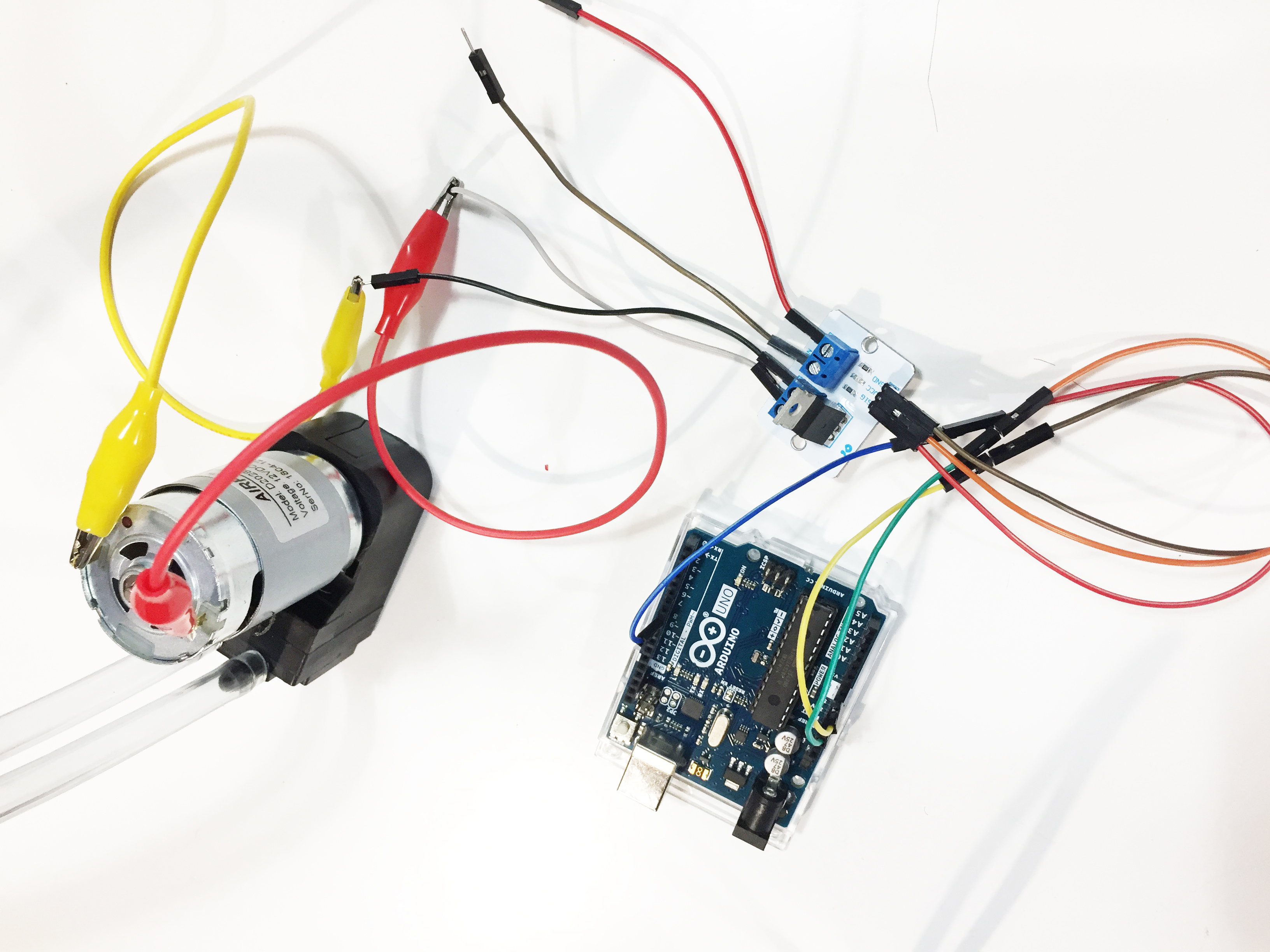7. Open Source hardware: from fibers to fabric¶
For this assigment I chose to build a vacuum machine for feet moulding and I worked with my classmate Nico Tando because we have the same interest in working on projects that allow the improvement of shoe design,one more personalized. Personalized it can give us a better performance in our daily life. Gone are the moments when our new shoes create wounds or after a few hours we can no longer bear them.
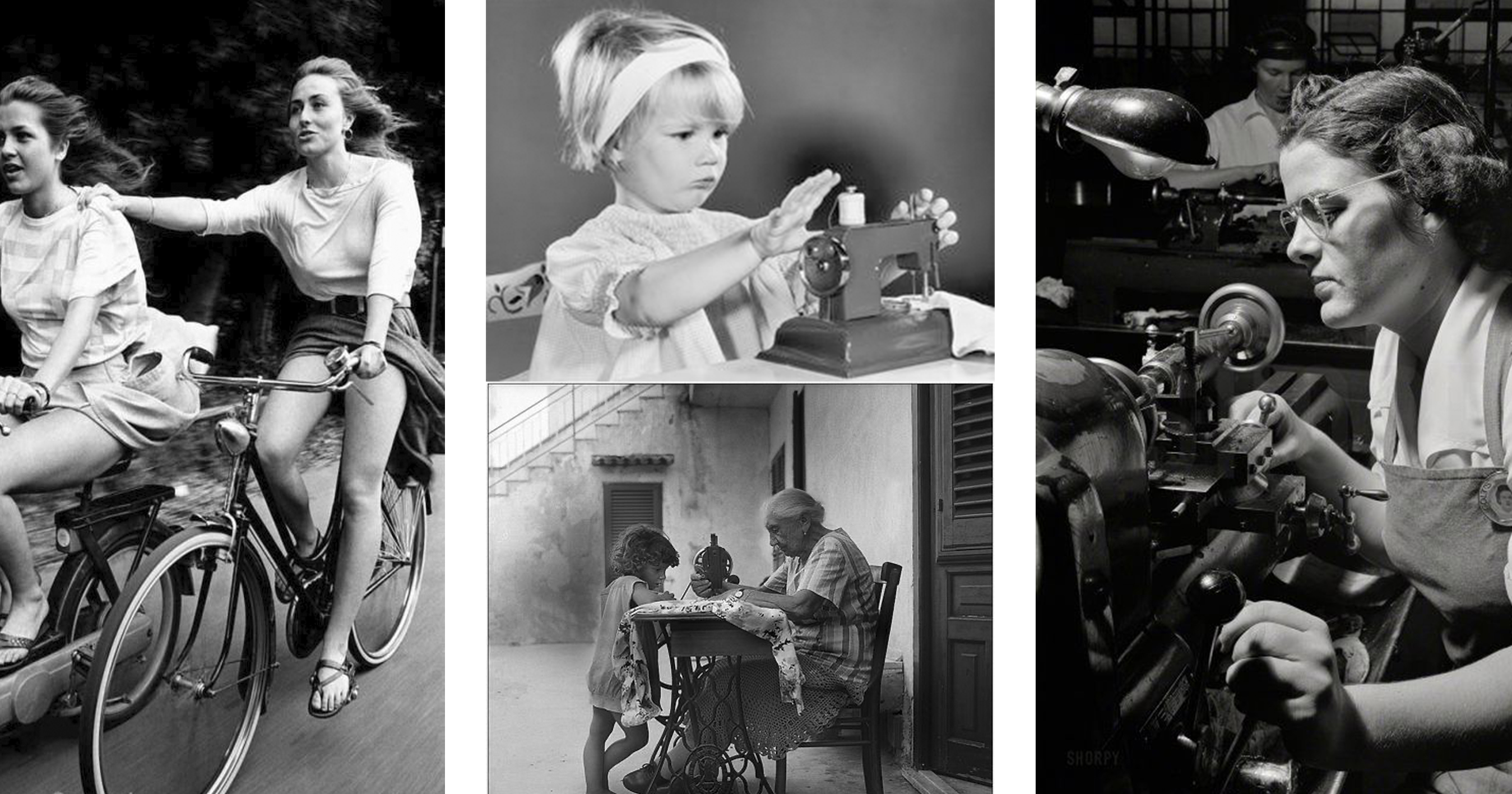
Research¶
Vacuum machine for feet moulding¶
List of materials¶
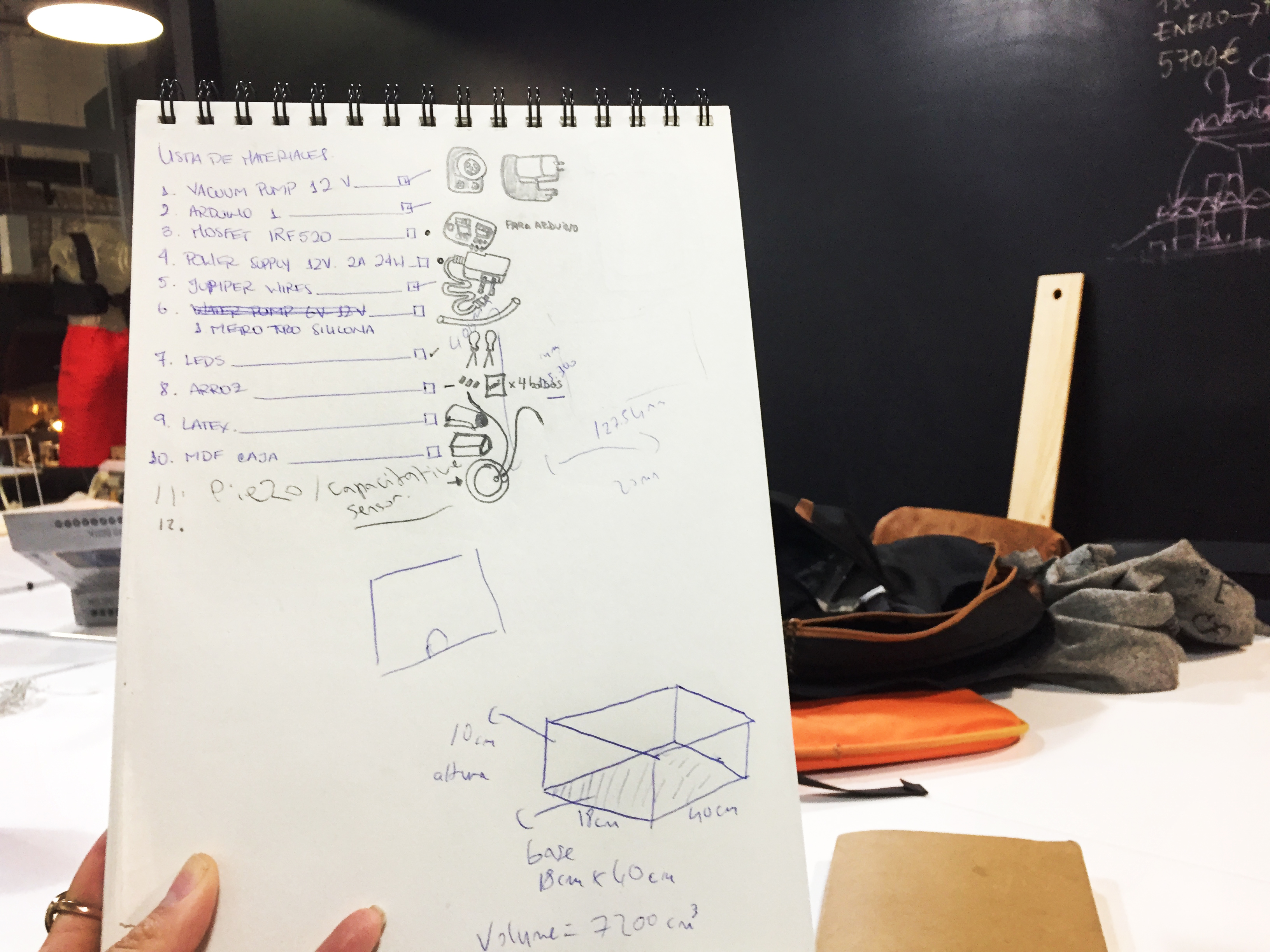
- Vacuum Pump 12v
- Arduino
- Mosfet IRF 520
- Power supply 12V 2A 24W
- Jumper wires (x5)
- Tube silicone (1 metro)
- Rice (3 kilos)
- Latex (40x25cm)
- Pieces of MDF to make a box.
- Capacitive Sensor
Steps for building the vacuum machine¶
- Making a wood box.
- Putting rice in the box (if is thinner is better because it will help to take the feet form). We used first rice but then change to cuscus.
- Cover the box with latex (put adjusted so there is no air leakage).
- Put two holes in the box for the sillicone tubes to enter (these will be placed with 3d printed insulation cylinders to prevent airloss).
- Also we need to add the mosfat which will be inbetween the Arduino Circuit and the Vacuum pump.
- We are adding a code to turn the pump on and off every 30 sec. (we need to consider air pressure). LEDs to be added an change of color when the machine is on or off.
- To see that the box doesn't have gaps, we placed the box in a dark room and shone a light to see if light was coming out of the box, hence indicating gaps.
Code Example¶
}
#define control 8 // output on Arduino
void setup() {
// IRF520 MOSFET Tutorial by Robojax
pinMode(control,OUTPUT);// define control pin as output
Serial.begin(9600);
}
void loop() {
// IRF520 MOSFET Tutorial by Robojax
digitalWrite(control,HIGH); // turn 30 min
delay(2000);
digitalWrite(control,LOW); // Turn the MOSFET Switch OFF
delay(2000);// Wait for 60000 ms or 30 min
}
//pump code
}
Building the box for the vaccum machine¶
The size 18x40cm big enough for fit one feet. Preferably use pieces of wood 2cm wide.
If you are in Barcelona you have to go to Cauchos Berna, a store where you can found many kinds of latex and the owner is really kind. Also is really near to the Fablab.
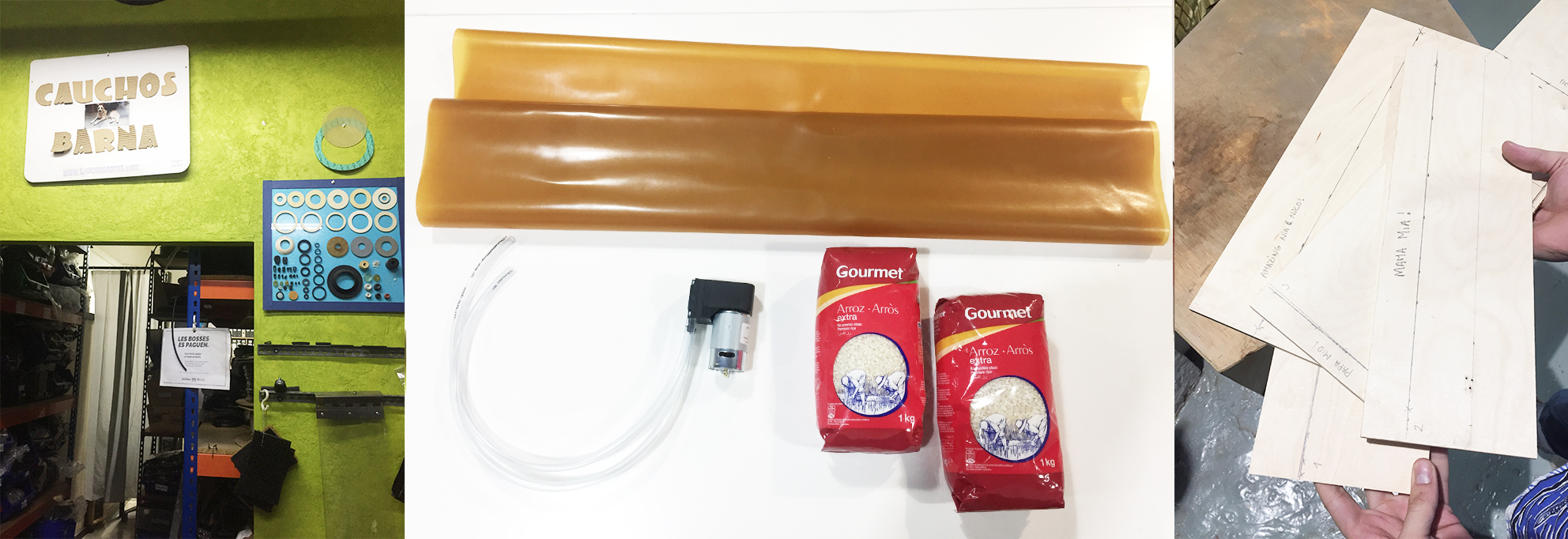
Building the box¶
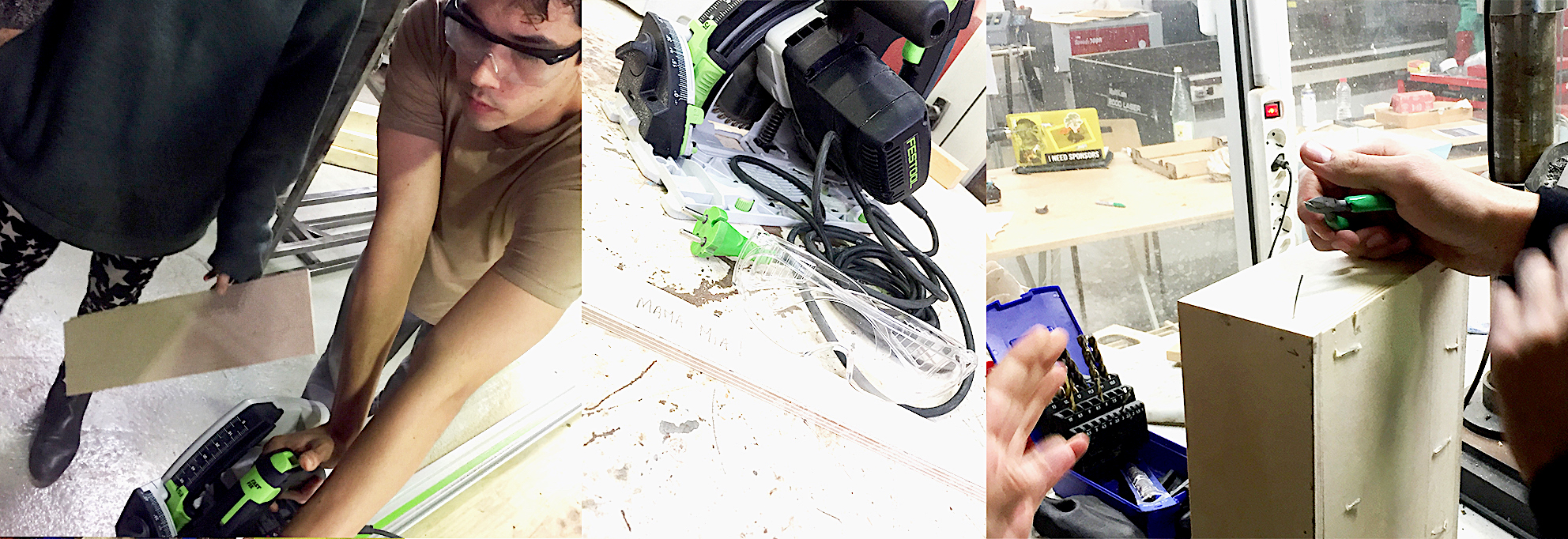

Tube fasteners for the vacuum machine¶
We made 2 fasteners tubes exactly the size of the silicone tubes that connect the box to the pump. Size 1.5cm and we gave 0.5cm wide.


Circuit¶
Testing¶
Testing with rice inside the box.
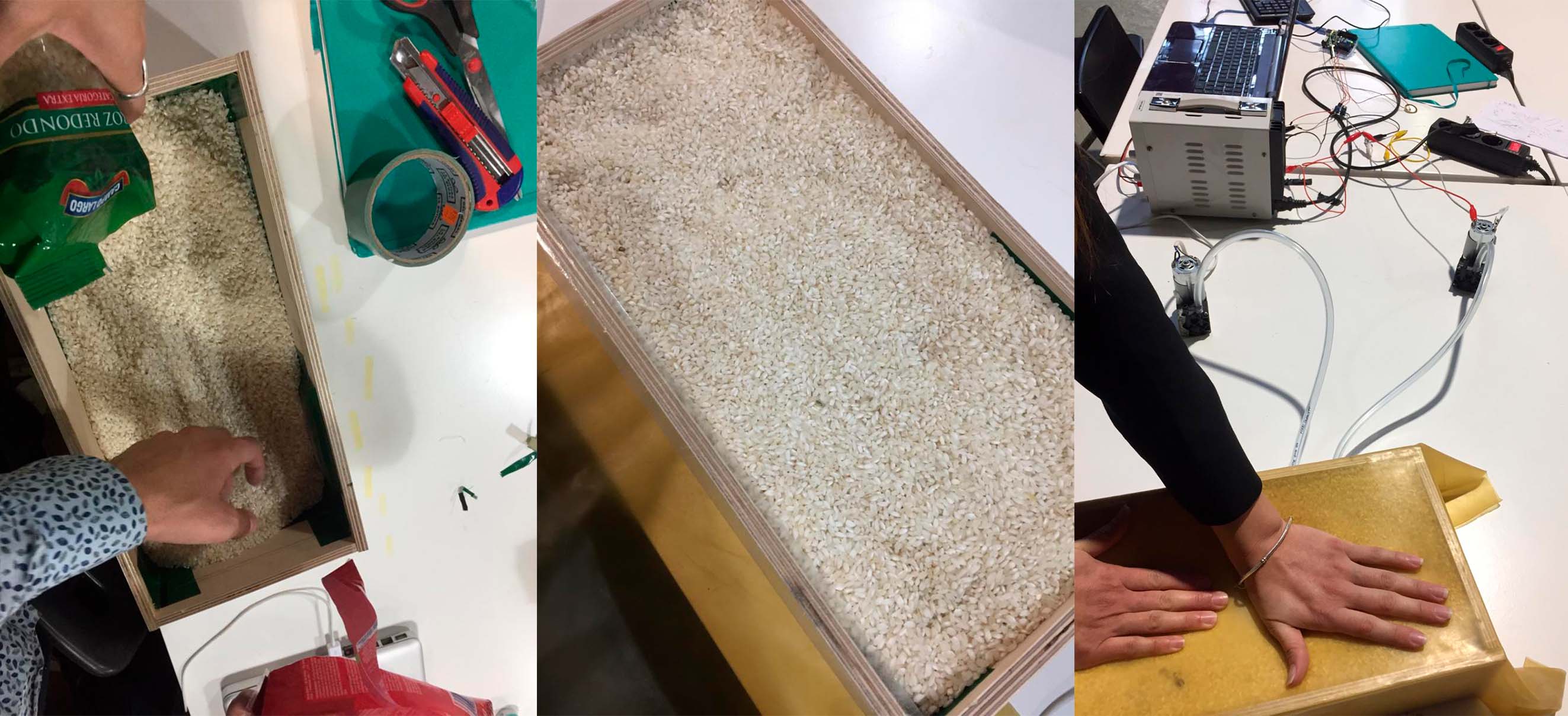
Then we change to cuscus because the the grains were much smaller. We made the test of two different materials: latex and special vacuum bag.
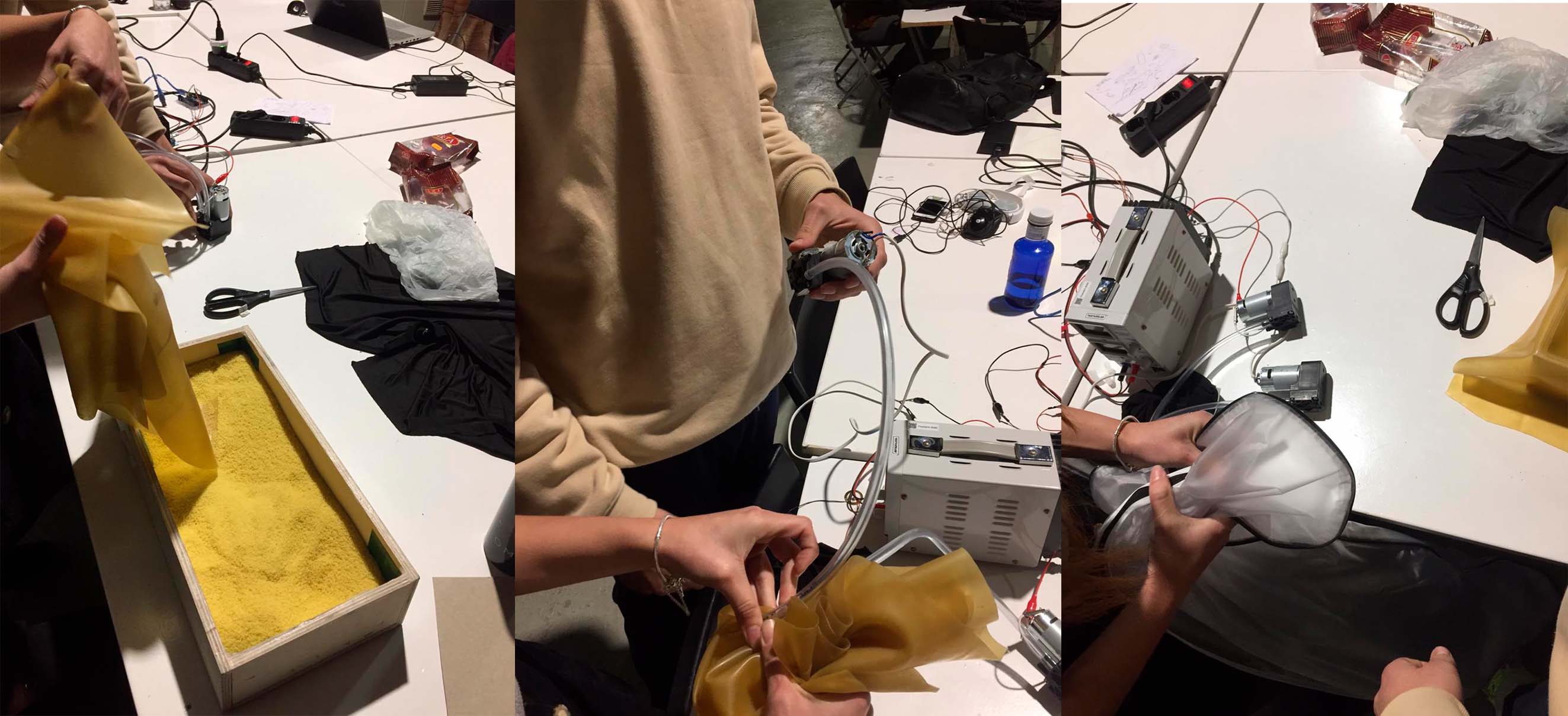
First testing of the machine with a feet on, didn't work as we expected.
We also put two vacuum pump and the power wasn't enough.
We thought that the box was with holes and that making exit the air but we discovered that was not. We test with a vacuum storage bag and it didn't work either.
Things to improve / what did not work We found out that the system required a bigger pump to suck more air and maintain it. Also write that the box with the latex have some air leaks which was making it difficult to keep the airtightness.
Conclusion¶
After many testing of possible problems of the machine, I reached the conclusion that the power of the vacuum pump wasn't enough for the kind of machine we were doing. Then also we could confirm this when we compare it with the vacuum machine from IAAC.
Biomaterial Frame¶
So, some months then this idea came to the light with Maria Antonieta Javier. Why we always have many many frames with different size? Will not not be better to have a multifuntinal frame that let us decided dimentions but also that give us the oportunity to create a big sheet with an easy tecnique?
